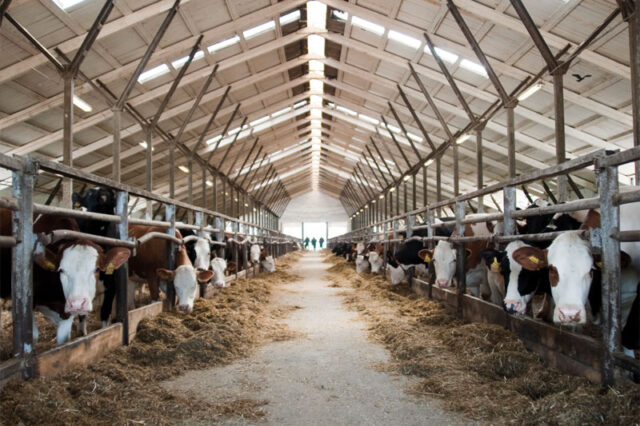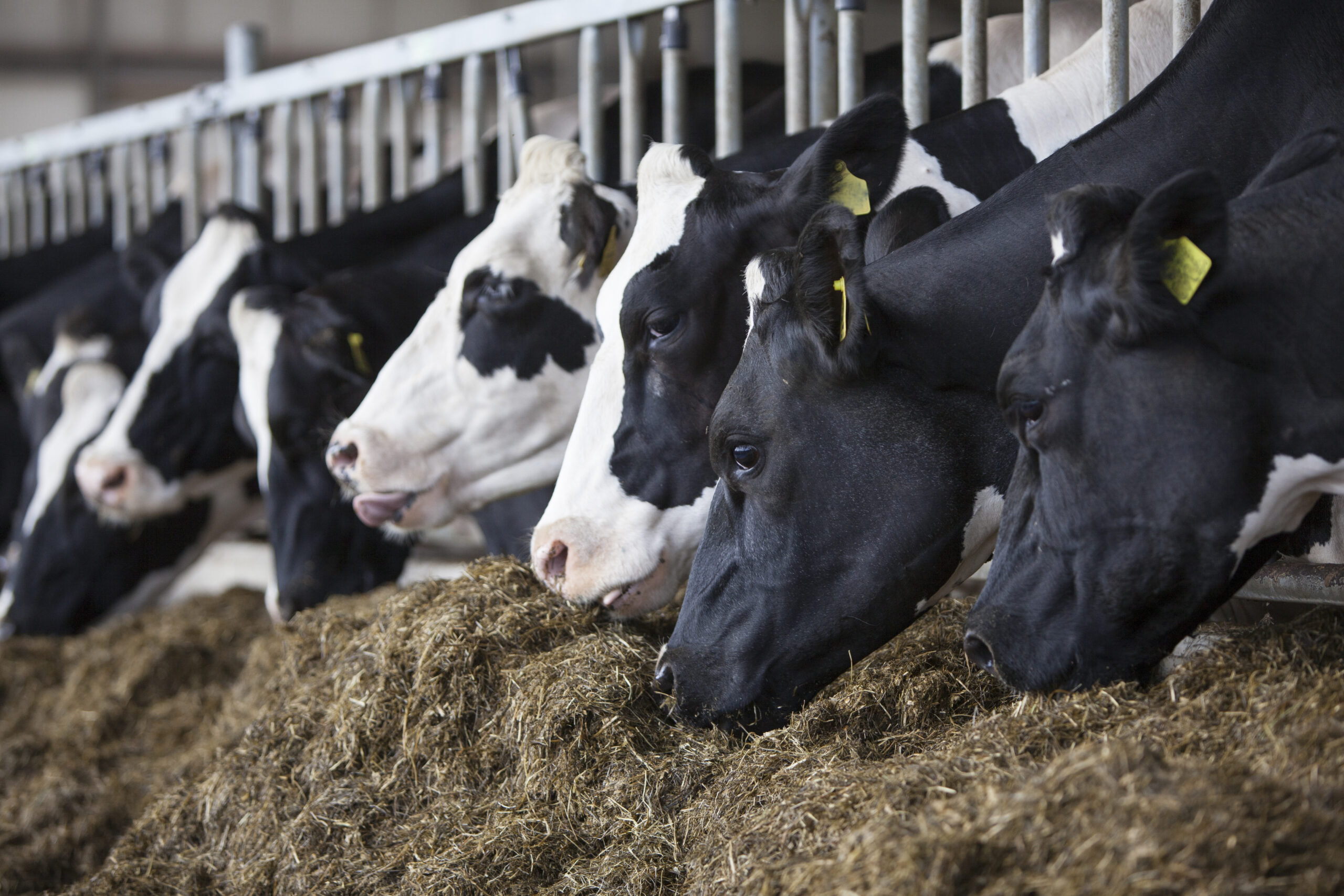
INTRODUCTION
Ruminal microbes play a great role in the digestion of ligno-cellulosic feed. Anaerobic fermentation in the rumen converts components of the feed into useful (VFA and microbial protein) and unwanted (methane and carbon dioxide) end products. In tropics, low-quality roughages, crop-residues etc. containing high level of ligno-celluloses, poor in fermentable carbohydrate and good quality protein are given for ruminants. Strategies aiming to optimize rumen manipulation is key to improve feedstuffs utilization and then to optimize ruminant production. Manipulating ruminal fermentation involves maximizing the efficiency of feed utilization and increasing ruminant productivity (milk, meat, and wool production). It is intended to enhance beneficial processes, and delete, minimize, alter, processes that are harmful to the host.
MAJOR BENIFITS OF RUMEN MANIPULATION
a. Enhance fibrolytic activity– Helps in manipulation of lignocellulosic bonds
b. Increase microbial protein synthesis
c. Reduction in proteolysis- Reduction in degradation of protein and decrease in deamination of amino acids
d. Reduction in methanogenesis- The provision of an alternate hydrogen sink
e. Prevention of acidosis
f. Shifting acetate to propionate production
g. Novel microbes
h. Metabolism of plant toxins
i. Synthesis of useful secondary metabolites
METHODS OF RUMEN MANIPULATION
A. Genetic manipulation
B. Non-genetic manipulation (Dietary manipulations)
A- GENETIC MANIPULATION
In genetic manipulation, attempts were made to develop genetically engineered rumen microbes by gene transfer/manipulation technique to enhance the animal productivity The potential of application of molecular techniques in achieving the goals of rumen manipulation are enormous.
OBJECTIVES OF GENETIC MANIPULATION
- To modify the distribution of fermentation products produced within the rumen to improve fermentation
- To produce metabolites (e.g., hormones) than can improve the metabolic efficiency of the animal
- To introduce improved or novel pathways for degradation of feedstuffs
- To suppress the growth and metabolic activities of undesirable organisms
APPROACHES OF GENETIC MANIPULATION
- Introduce new species or strains of micro-organisms into the gut
- Genetic modification of micro-organisms already present in the rumen
- Common shuttle vector used- Escherichia coli
- Genes which have been cloned in Escherichia coli are endoglucanase, xylanase, β-glucosidase, amylase, glutamine synthetase
- Donor source of Bacteroides fibrisolvens, Ruminococcus flavefaciens, Fibrobacter succinogenes, Neocallimastix frontalis, Streptococcus bovis etc.
B- NON-GENETIC RUMEN MANIPULATION
1. FEED ADDITIVES
2. DEFAUNATION
3. PLANT EXTRACTS
1. FEED ADDITIVES
Feed additives are compounds added to the diet in order to improve dietary nutrient utilization, enhance performance, minimize the risk of metabolic diseases, and curtail adverse impacts of diets on the environment.
Feed additives classified into:
Ⅰ. MICROBIAL FEED ADDITIVES (PROBIOTICS)
Ⅱ. NON-MICROBIAL FEED ADDITIVES
CHARACTERISTICS OF FEED ADDITIVES
- Modulate ruminal pH and reduce lactate accumulation
- Reduce the risk of development of diarrhea in neonates and ruminal acidosis or bloat in older livestock
- Improve the efficiency of ruminal energy utilization
- Enhance rumen development in neonatal ruminants
- Increase ruminal organic matter & fiber digestibility
- Increase the level and efficiency of animal performance
- Improve the efficiency of ruminal nitrogen utilization
- Be cost effective and approved by legislative authorities
A. PROBIOTICS
A live microbial feed supplement, which beneficially affects the host animals by improving its intestinal microbial balance. These are Direct fed microbes (DFM)
FDA defines DFM as a source of live naturally occurring microorganisms and this includes bacteria and fungi/yeast
B. IONOPHORES
Ionophores are organic compounds mainly from Streptomyces spp. that facilitate selective transportation of ions across the outer cell membrane.
E.g. Monensin (widely used ionophore as `Rumensin’), Lasalocid, Tetronasin, Nigericin, Salinomycin, Lysocellin, Narasin, Laidlomycin and Valynomycin
Ionophores are approved in several countries including Australia, Argentina, New Zealand, and South Africa and USA
EFFECT OF IONOPHORES ON RUMEN END PRODUCTS
Ionophores favor propionate production. The associated decrease in production of methane that conserves energy in the ruminants. Ionophores inhibit gram-positive bacteria. They cause decrease in hydrogen and formate, a precursor of methane.
ORGANIC ACIDS
Commonly used organic acids are Fumarate, Malate and Aspartate. They stimulate propionate production in the rumen by acting as an H2 sink, thereby reducing the amount of CH4.
ESSENTIAL OILS
Essential oils are plant secondary metabolites, volatile components and aromatic lipophilic compounds with very strong antimicrobial properties, which inhibit the growth and survival of most microorganisms in rumen. They help to modulate cellular targets particularly by interacting with processes associated with the cell membrane such as ion gradients, protein translocation, phosphorylation, ATP production. Like monensin, selectively inhibit gram-positive bacteria as like monensin.
C. EXOGENOUS FIBROLYTIC ENZYMES
Commercial mixtures of cellulase and hemicellulase enzymes with varying endoglucanase, exoglucanase, xylanase, protease, β-glucosidase activities have shown promise at hydrolyzing plant cell walls. Enzymes can improve fibre digestibility and animal productivity. Further, lower the acetate: propionate ratio in the rumen and ultimately reducing CH4 production.
D. FAT SUPPLEMENTATION
Fat supplementation increases the dietary energy content. Among fatty acids, the medium-chain C8:C14 from coconut or palm oil is the most effective in CH4 mitigation. Furthermore, fats are not metabolized in the rumen and therefore do not contribute to methanogenesis.
2. DEFAUNATION
The process of making the rumen of animals free of rumen protozoa is called defaunation and the animal is called defaunated animal. Rumen protozoa elimination by defaunation reduces the ruminal methane production and increases protein outflow in the intestine, resulting in improved growth and feed conversion efficiency of the animals. Defaunation increases the number of amylolytic bacteria.
METHODS OF DEFAUNATION
Ⅰ. Isolation of newborn animals:
- Separation of newborn animals from their dams after birth and preventing them from any contact with the adult ruminant animals.
- The newborn animals should be separated 2 to 3 days after birth.
Ⅱ. Chemical treatment
- Copper sulphate
- Manoxol
- Sodium lauryl sulphate
Ⅲ. DIETARY MANIPULATION
Offering high-energy feed (especially cereal grains like barley, maize) to the starved (for 24 hours) animals creates acidic condition in the rumen and rumen pH fall below 5.0. Ciliate protozoa are very much sensitive to rumen pH below 5.0. This fall in rumen pH eliminates the ciliate protozoa and the animal become defaunated.
3. PLANT EXTRACTS
The antimicrobial activity of plant extracts – Secondary plant metabolites (saponins, tannins, Anthraquinone andSinigrin) is prominent. Plants exhibiting anti-methanogenic activity include Equisetum arvense, Lotus corniculatus, Rheum palmatum, Salvia officinalis, Sapindus saponaria, Uncaria gambir and Yucca schidigera. Major commercial source of saponins- Yucca schidiger
CONDENSED TANNINS
Development of forages with higher levels of tannins, such as clover and other legumes, including trefoil, vetch, Sulla and chicory promotes CH4 mitigation (upto 55%). Condensed tannins can bind protein by hydrogen bonding at near neutral pH (pH 6.0 to 7.0) in the rumen to form CT-protein complexes, and then dissociate and release bound protein at pH less than 3.5 as they enter the abomasum and small intestine. VFA production increases and there is shift from acetate to propionate production.
Feeds supplemented with tannins or tannin rich forages, which bind proteases and thus prevent proteolysis. Methanol extract of Harad (Terminalia chebula) containing tannin decreased methane production in vitro by 95% when given at the level of 0.25ml/30ml. But the Limitations Is it Impede forage digestibility and animal productivity when fed at a higher concentration.
SAPONINS
Saponins are naturally occurring surface-active glycosides that are found in a wide variety of cultivated and wild plant species. They are antiprotozoal at lower concentrations. At higher concentrations can suppress Methanogens.
CONCLUSIONS
- Rumen should be manipulated essentially by altering the composition of rumen microflora, feeding local plants or tree leaves to defaunate the animals for improving its productivity.
- Genetic manipulation of rumen microorganism for efficient ruminal fermentative digestion has an enormous biotechnological potential.
- However in India, more emphasis should be given for manipulating the rumen to increase cellulolytic activity for efficient utilization of low grade roughage.

Dr. Nishtha Kushwah, Dr. Sadhana Tiwari,
Dr. Shwetambri Jamwal, Dr. Akanksha Gupta
ICAR- National Dairy Research Institute, Karnal, Haryana, India

















